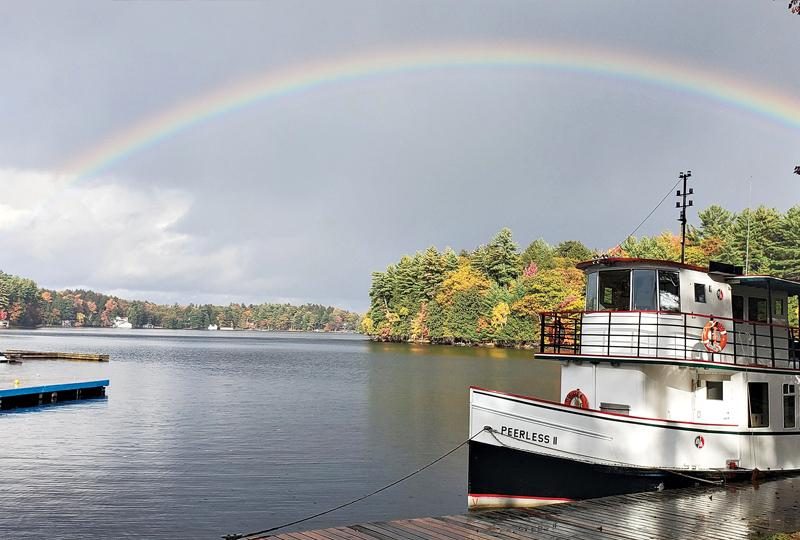
Visit the Great White (far) North
Canada’s Arctic has been much in the news over the past months. With global warming radically changing the north, here are books that remind us of how things used to be.
In Arctic Adventures: Tales from the Lives of Inuit Artists (Groundwood, $18.95) Raquel Rivera recounts stories from the childhoods of four acclaimed artists. One story, by Pudlo Pudlat (1916-1992), recalls a spring hunting trip with a younger boy, Kapik. They had built their camp on what seemed like safe ice but soon it began to break up. Pudlo led the way as they jumped from floe to floe back towards land, but as Pudlo made his last leap, the ice shifted, the gap widened and Kapik was stranded. As the younger boy drifted out to sea, Pudlo watched through his binoculars hoping that when the tide turned, the floes would be carried back to land. Soon Kapik was nothing but a dot on the horizon and Pudlo began to fear that his long vigil might not end happily.
For this story and three more reminiscences that explore other aspects of Inuit life, artist Jirina Marton uses shades of blue/green and white or browns and greys to sensitively and evocatively illustrate the lives of Inuit living off the land. Information pages following each story give biographical details and display the art of each storyteller. Both stories and art give modern children a sense of the daily life the Inuit lived not so long ago.
For readers wanting more details about the art of the north Shelley Falconer and Shawna White have written Stones, Bones and Stitches: Storytelling Through Inuit Art (Tundra, $24.99). Using colour photos of sculpture, printmaking and embroidery as well as archival photos from the lives of the artists, they show how traditional skills informed the art. The pages tend to be weighted down with dense paragraphs making the book not particularly reader friendly, but for those interested in Inuit art there is much valuable information.
The Inuit Thought of It First: Amazing Arctic Innovations (Annick, $19.95), by Alootook Ipellie and David MacDonald, sets out a plethora of information in a very accessible format. Each topic, presented through photos with deep captions, is complete on one double-page spread. "Clothing," for example, shows parkas from different parts of the Arctic and explains simply and clearly how they were made waterproof, warm enough to protect against the intense cold and adaptable (e.g. pouches for babies in women’s parkas). Other sections cover such Inuit innovations as snow goggles, kayaks and the many uses of the inuksuk.
Heading west to the Northwest Territories, the home of the Dene peoples, we find artist Lynn Blaikie speculating about what lies Beyond the Northern Lights (Fitzhenry & Whiteside, $19.95). Our nameless protagonist beseeches Raven to fly her to magic places beyond the northern lights where elders sit by the crackling fire pits and where ancient wisdom will bless her. Blaikie’s batik art in intense shades of yellow ochre, crimson, deep blue and dark green evoke both the dyed quill embroidery of the Dene people and the colours of the shimmering northern lights. This is a mood piece that gives a sense of the mythology and spiritual life of native peoples.
In Northern Lights (Sasquatch Books, $10.95) Mindy Dwyer organizes her information alphabetically. For children who just want to know what the lights are all about we discover that Aurora was the Roman goddess of dawn and Borealis comes from Boreus, the Greek god of the north wind. Other entries give Old and New World myths of ancient peoples as well as scientific explanations of various aspects of the lights. This is a useful introduction to a fascinating natural phenomenon.
Moving south of the treeline we find poet Christopher Patton celebrating Jack Pine (Groundwood, $18.95) the short, twisted tree that grows mainly in our boreal forest. Patton tells us "you’ll never see, with luck, a tree less lovely than – a tree more bent, more squat, more grim, more weird and ugly than – Jack Pine." Does he poison the ground, as some farmers used to think, or is he one of nature’s great boons, acting as a nurse tree to protect the seedlings of trees more useful to humans? With help from artist Cybèle Young’s tinted etchings, showing the various stages and settings of Jack Pine’s life, Patton gives both word pictures and information about one of our overlooked natural treasures.
The north makes up more than three-quarters of Canada. These books reveal its mysteries and delights.







